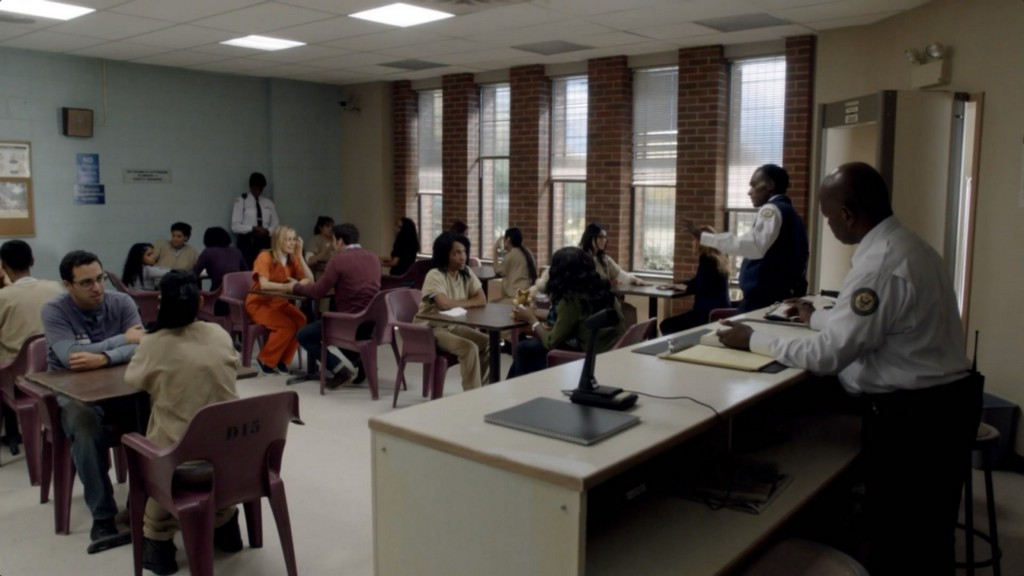Prisons Are Phasing Out In-Person Visitation for Paid Video Conferencing

Prisons make a lot of money off phone calls. As the Washington Post reported last October:
Families can easily spend between $1,000 and $2,000 a year [calling incarcerated loved ones]. In one ethnographic study, the mother of a prisoner spent 20 percent of her total income just to be able to talk to her son on the phone. Why are prison phone calls so expensive? Because they make a lot of money for private businesses and for states.
So it shouldn’t be surprising that prisons have started looking for other ways to charge for communication—including paid email, as the International Business Times reports:
[…] the fees range from 5 cents to $1.25 a message, and because the messages sometimes have character limits ranging from 1,500 to 6,000, prisoners have to pay more to send longer messages.
Now, Mic has a story about a Texas prison that decided to take the pay-to-communicate experiment to its extreme and logical end: eliminating in-person visitation entirely and funneling all face-to-face communication through a costly video conferencing service.
The End of Prison Visitation Is Tearing Families Apart
Jack Smith IV writes about the difficulties one woman, Lauren Johnson, experiences when she tries to talk to her incarcerated friend Ashika Renae Coleman:
Johnson logged into the Securus Technologies website — a Skype-like communication system used by the Travis County jail — on her PC laptop. But the video player didn’t have the latest version of Java. When Johnson installed it, the system insisted she had not. So Johnson tried another laptop — a MacBook this time. Java was working this time, Flash was not.
Thinking the browser might be the problem, Johnson tried launching the video player in Chrome, then switched to Safari before giving up and using the Securus Android app on her phone.
Finally, Coleman’s face appeared on screen — barely. For the entire call, a glitch in the system caused Coleman’s image to look like a tangle of window blinds. Johnson wanted to talk to Coleman about her case, but through most of the call, she simply repeated, “Hello — can you hear me now?” Johnson was charged $10 for the video visit, even after cutting it a few minutes short of the 20-minute maximum.
Arguably, in-person prison visitation was never truly “free;” people often have to take several hours out of their day and drive significant distances just for the chance to have a short visitation with a loved one. But eliminating that option removes the type of in-person human connection that can only barely be communicated over laggy, glitchy video conferencing systems. (I don’t know about you, but video services like Skype, Google Hangouts, and FaceTime are my last resort for communication; I’d rather email, text, IM, DM, Slack, anything than have to deal with those, and they’re the best of the options.)
The Texas prison Smith describes is not the only prison that has decided to eliminate in-person visitation in favor of video chat:
Over 600 prisons in 46 states have some sort of video visitation system, and every year, more of those facilities do away with in-person visitation.
This, in turn, means these prisons can keep fewer staff members on the payroll while simultaneously making money through dollar-a-minute video services. (Yes, there are private contractors involved, and they also make money.) Smith writes that in-person visitation has huge benefits for people in prison systems— “Prison recidivism goes way down for those who keep up strong family and community ties throughout their incarcerations,” for starters—but even then you can see how that might not be a benefit to the people making the money; everyone who ends up back in jail earns them a dollar a minute every time they connect with someone in the outside world.
Read the entire Mic article, and let us know whether you see any way out of this. I know the FCC is currently tangling with prison phone companies to get them to bring rates down, and even they can’t do it (both Mic and the Washington Post article I linked above explain why the government can’t just say “no, your phone calls are too expensive”). Which means I can’t really see a scenario where a group of individuals successfully works towards changing prison communication systems either—but I could be wrong.
Support The Billfold
The Billfold continues to exist thanks to support from our readers. Help us continue to do our work by making a monthly pledge on Patreon or a one-time-only contribution through PayPal.
Comments